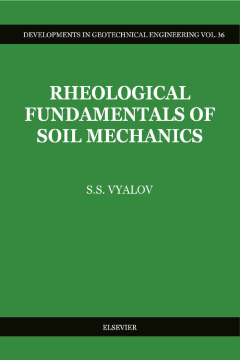
Additional Information
Book Details
Abstract
Soil rheology is a branch of soil mechanics investigating the origin of, and the time-dependent changes in the stressed and strained state of soil. The author of this book however interprets rheology as being the science concerned on the one hand with how the state of stress and strain is formed and altered in a body, and on the other, with the particulars of the body's behaviour failing to fit the traditional concepts of elasticity and plasticity. There are many instances where the actual behaviour of soil differs substantially from schematized concepts and by taking into account all the peculiarities of soil deformation, precise knowledge of soil properties can be obtained and analytical prediction thus improved. Such problems are tackled in this book.
This book comprises three main parts. The first part deals with basic rheological concepts and terms, the physics of soil, principles of stress-strain theory, elasticity, plasticity and viscosity - all cardinal rheological properties. The second part explains the rheological processes taking place in soils, such as creep and long-term strength, which are examined by the author with allowance for nonlinear deformation. Along with the known phenomenological theories, attention is paid to the novel kinetic (physical) theory of deformations and long-term strength. The third part outlines the generalized theory of soil deformation. It explains why soil offers different resistances to tensional and compressional deformations and derives the generalized rheological equation of state, enabling the effect of the three stress tensor invariants on the changes in shape and volume to be taken into account. From the standpoint of the theory discussed, the penultimate chapter gives examples of solutions to some problems facing soil mechanics. The final chapter reviews mathematical models representing the actual behaviour of soil under load and provides numerical solutions for engineering problems obtained with the aid of computer models.
Thus the book provides a wealth of information which will be of interest both to the practising geotechnical engineer as well as to teachers and students.
